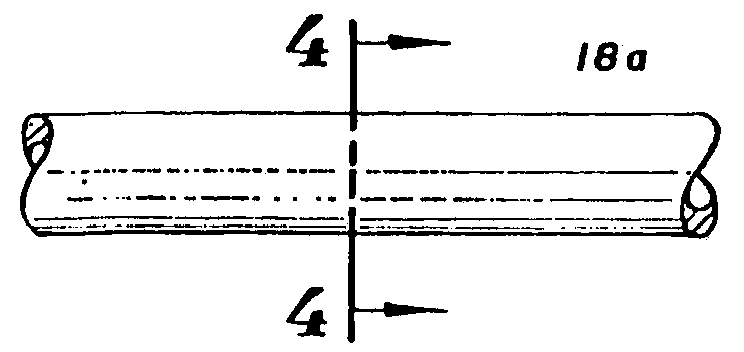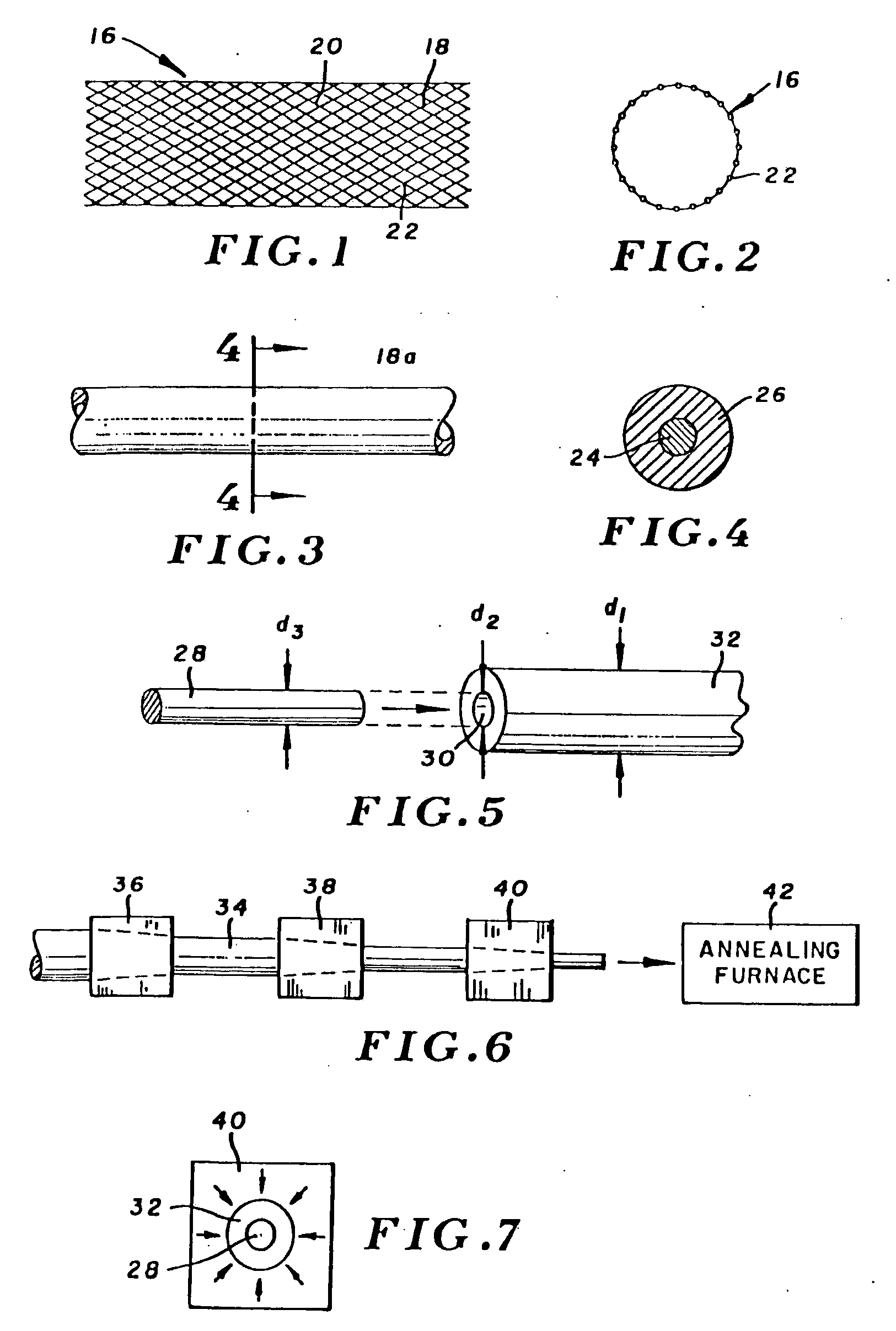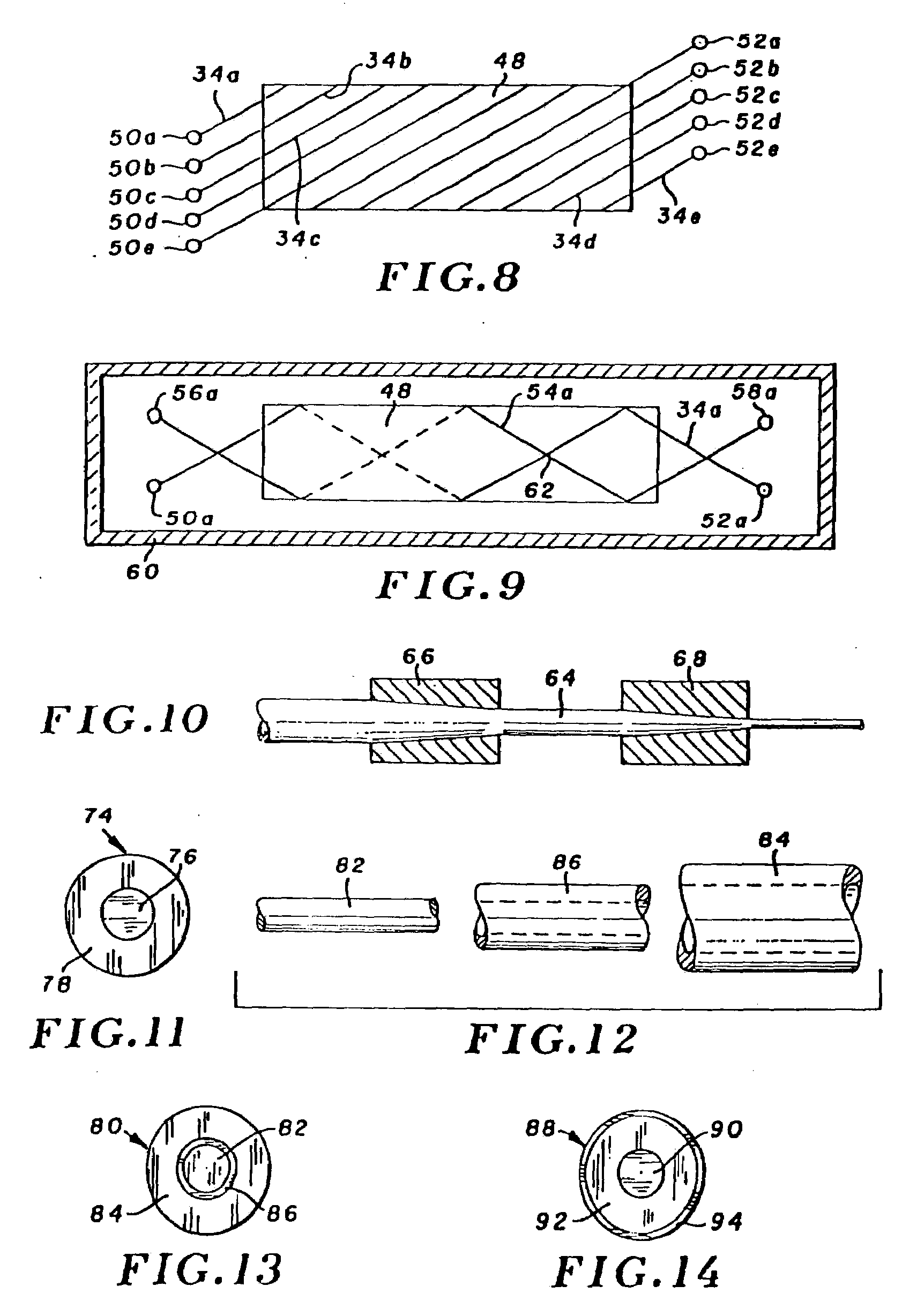Clad Composite Stent
a composite stent and stent body technology, applied in the field of body implantable medical devices, can solve the problems of poor fatigue resistance, lack of elasticity of the stent, and inability to adapt to fluoroscopic imaging, so as to remove strain hardening and other stresses
- Summary
- Abstract
- Description
- Claims
- Application Information
AI Technical Summary
Benefits of technology
Problems solved by technology
Method used
Image
Examples
example 1
[0087]An elongate tantalum core having a diameter of 0.46 inches (1.17 mm) was assembled into an Elgiloy alloy case having an outer diameter of 0.102 inches (2.6 mm) and an inner diameter of 0.056 inches (1.42 mm). Accordingly, the lateral cross-sectional area of the tantalum core was about 25% of the composite filament lateral cross-sectional area. Composite filaments so constructed were subjected to 5-6 alternating stages of cold-working and annealing, to reduce the outer diameters of the composite filaments to values within the range of 0.004-0.0067 inches. The tantalum core diameters were reduced to values in the range of 0.002-0.0034 inches. The composite filaments were formed into a stent suitable for biliary applications, and age hardened for up to five hours, at temperatures in the range of 900-1000° F.
example 2
[0088]Elongate cores of a platinum iridium alloy (20% by weight iridium), with initial core outer diameters of 0.088 inches, were inserted into annular Elgiloy cases with outer diameters of 0.144 inches and inside diameters of 0.098 inches. The resulting composite filaments were processed through about six cold-working and annealing cycles as in the first example, to reduce the outer filament diameter to values within the range of 0.00276 inches-0.0039 inches, and reducing the core outer diameter to values in the range of 0.0018-0.0026 inches. The core thus constituted 43% of the filament lateral cross-sectional area. The resulting filaments were formed into a small vascular stent, and age hardened for approximately three hours.
example 3
[0089]Composite filaments were constructed and processed substantially as in example 2, except that the core was formed of a platinum nickel alloy, with nickel 10% by weight.
PUM
| Property | Measurement | Unit |
|---|---|---|
| yield strength | aaaaa | aaaaa |
| linear attenuation coefficient | aaaaa | aaaaa |
| weight percent | aaaaa | aaaaa |
Abstract
Description
Claims
Application Information
 Login to View More
Login to View More - R&D
- Intellectual Property
- Life Sciences
- Materials
- Tech Scout
- Unparalleled Data Quality
- Higher Quality Content
- 60% Fewer Hallucinations
Browse by: Latest US Patents, China's latest patents, Technical Efficacy Thesaurus, Application Domain, Technology Topic, Popular Technical Reports.
© 2025 PatSnap. All rights reserved.Legal|Privacy policy|Modern Slavery Act Transparency Statement|Sitemap|About US| Contact US: help@patsnap.com



